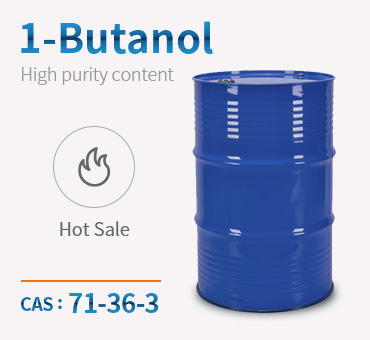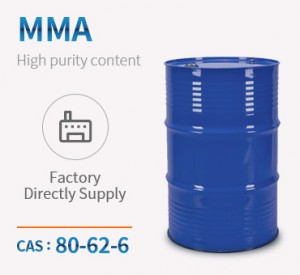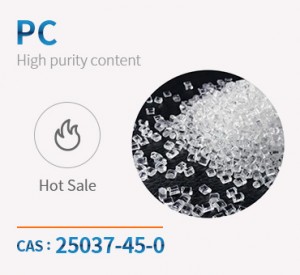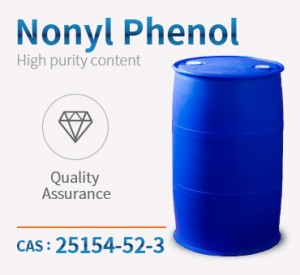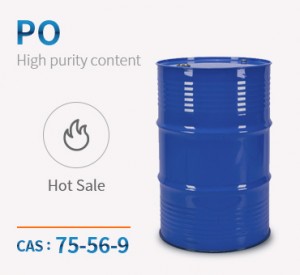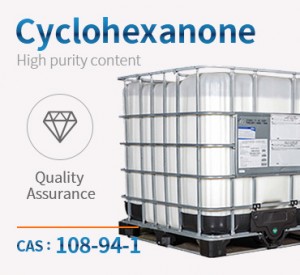Product Name:n-butanol
Molecular format:C4H10O
CAS No:71-36-3
Product molecular structure:

Chemical Properties:
1-Butanol is a type of alcohol with four carbon atoms being contained per molecule. Its molecular formula is CH3CH2CH2CH2OH with three isomers, namely iso-butanol, sec-butanol and tert-butanol. It is colorless liquid with alcohol odor.
It has the boiling point of being 117.7 ℃, the density (20 ℃) being 0.8109g/cm3, the freezing point being-89.0 ℃, flash point being 36~38 ℃, self-ignition point being 689F and the refractive index being (n20D) 1.3993. At 20 ℃, its solubility in water is 7.7% (by weight) while the water solubility in 1-butanol was 20.1% (by weight). It is miscible with ethanol, ether and other kinds of organic solvents. It can be used as the solvents of a variety of paints and the raw material for producing the plasticizers, dibutyl phthalate. It can also be used for the manufacture of butyl acrylate, butyl acetate, and ethylene glycol butyl ether and also used as the extract of intermediates of organic synthesis and biochemical drugs and can also used in the manufacture of surfactants. Its steam can form explosive mixtures with air with the explosion limit being 3.7%~10.2% (volume fraction).
Application:
1. mainly used in the manufacture of phthalic acid, aliphatic dibasic acid and n-butyl phosphate plasticizers, which are widely used in a variety of plastics and rubber products. It is also the raw material for making butyraldehyde, butyric acid, butylamine and butyl lactate in organic synthesis. It is also used as dehydrating agent, anti-emulsifier and extractant of oil and grease, drugs (such as antibiotics, hormones and vitamins) and spices, and additive of alkyd resin coating. It is also used as a solvent for organic dyes and printing inks, and as a dewaxing agent. Used as a solvent to separate potassium perchlorate and sodium perchlorate, also can separate sodium chloride and lithium chloride. Used to wash sodium zinc uranyl acetate precipitate. Used in colorimetric determination to determine arsenic acid by the molybdate method. Determination of fat in cow’s milk. Medium for saponification of esters. Preparation of paraffin-embedded substances for microanalysis. Used as a solvent for fats, waxes, resins, shellacs, gums, etc. Co-solvent for nitro spray paint, etc.
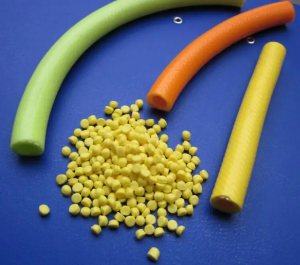
2. Chromatographic analysis standard substances. Used for colorimetric determination of arsenic acid, solvent for separation of potassium, sodium, lithium and chlorate.
3. An important solvent, used in large quantities in the production of urea-formaldehyde resins, cellulose resins, alkyd resins and paints, and also as a common inactive diluent in adhesives. It is also an important chemical raw material used in the production of plasticizer dibutyl phthalate, aliphatic dibasic acid ester and phosphate ester. It is also used as dehydrating agent, anti-emulsifier and extractant for oils, spices, antibiotics, hormones, vitamins, etc., additive for alkyd resin paint, co-solvent for nitro spray paint, etc.
4. Cosmetic solvent. It is mainly used as co-solvent in nail polish and other cosmetics to match with the main solvent such as ethyl acetate, which helps to dissolve the color and regulate the volatility and viscosity of the solvent. The addition amount is generally about 10%.
5. It can be used as antifoaming agent for ink blending in screen printing.
6. Used in baked goods, pudding, candy.
Products categories
-

Phone
-

E-mail
-

Whatsapp
-

Top

